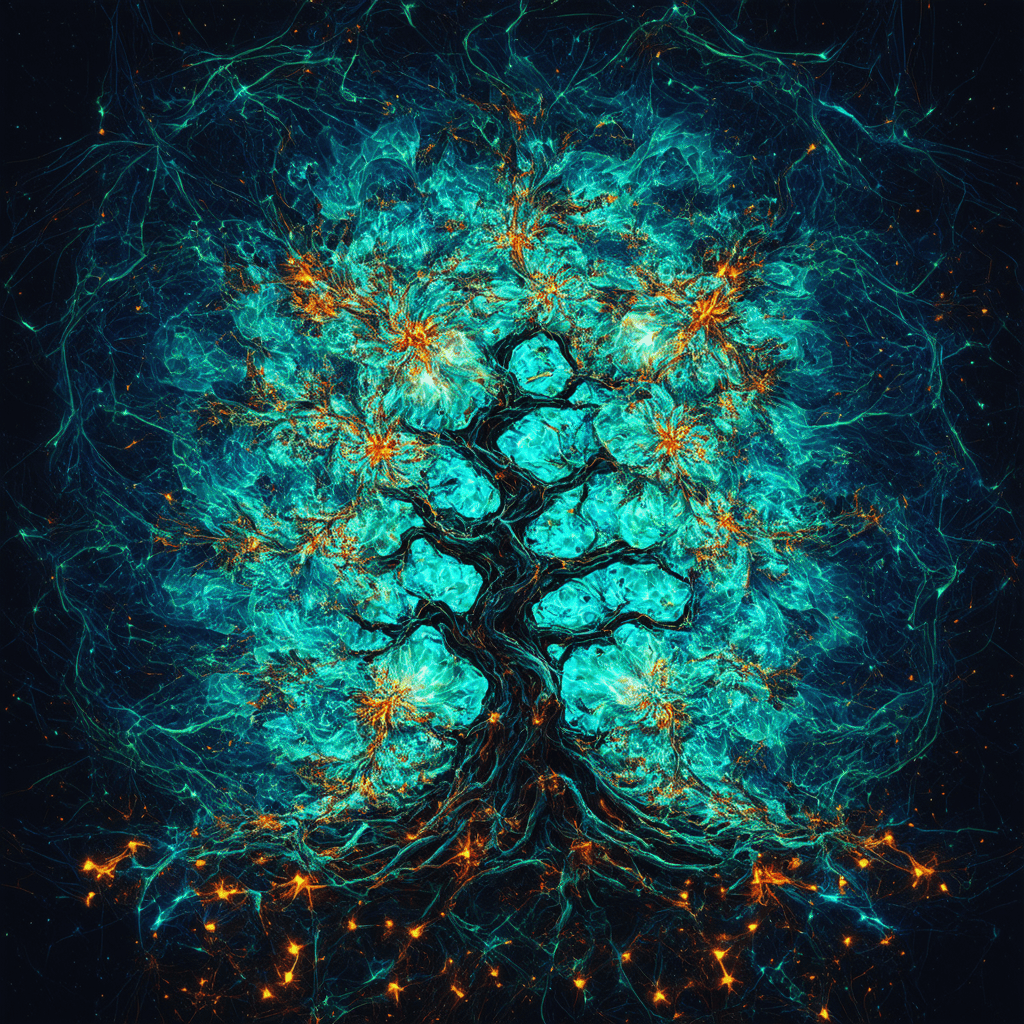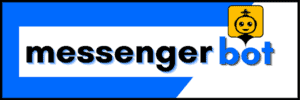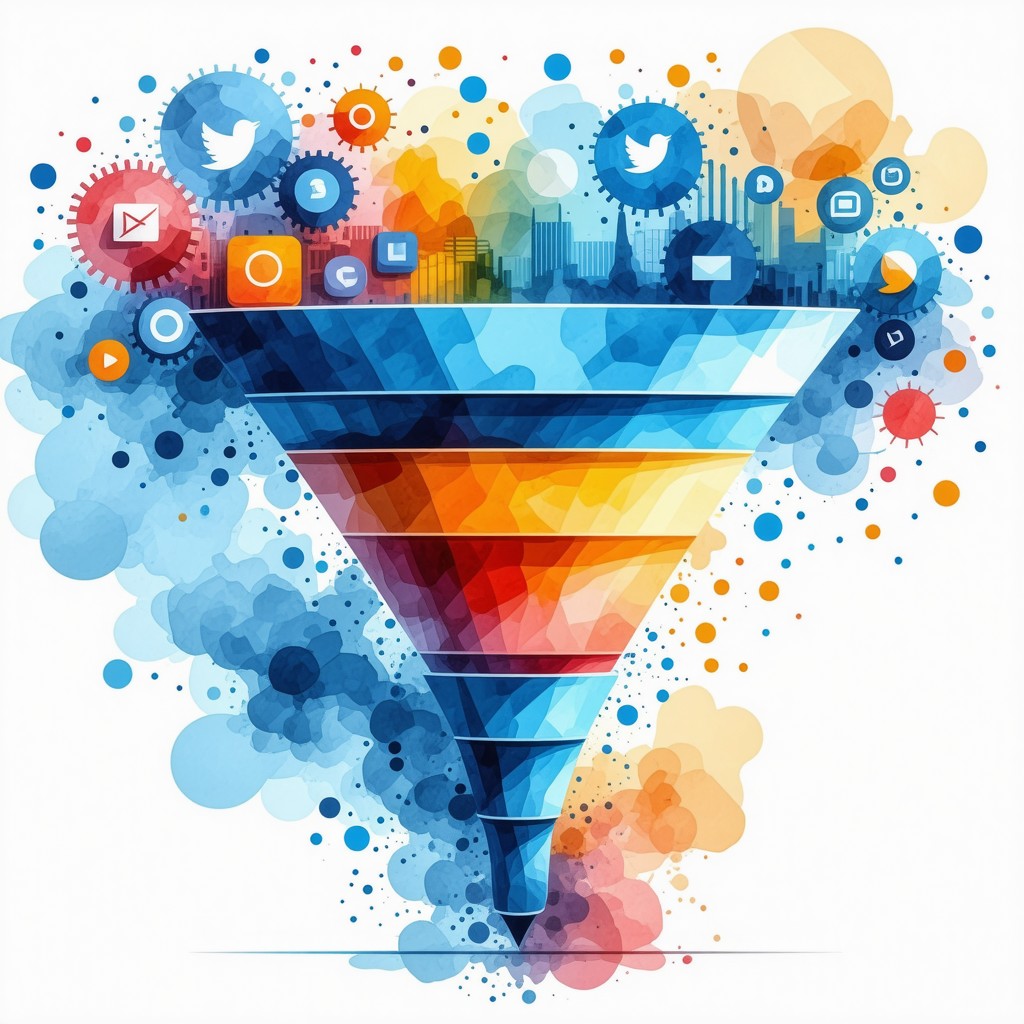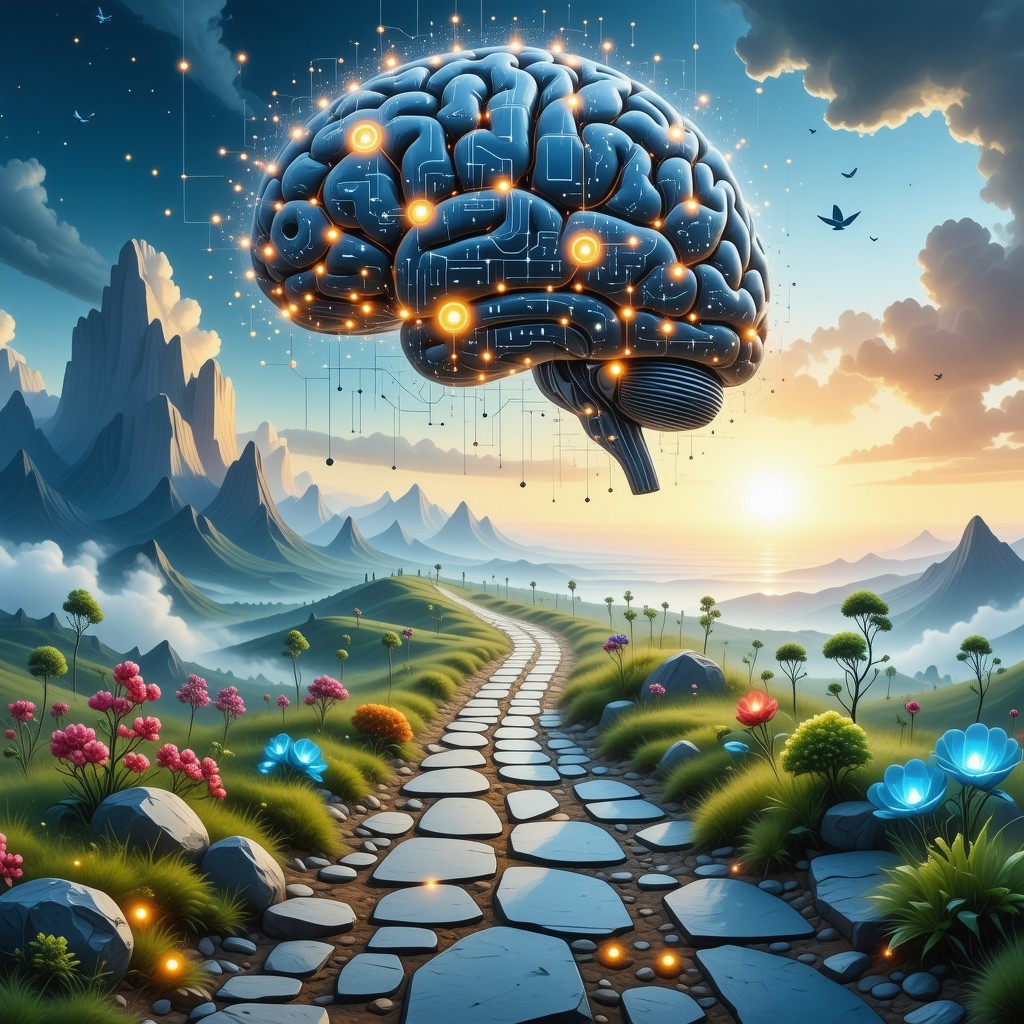Key Takeaways
- Machine Learning Bots: These advanced software applications utilize machine learning algorithms to provide human-like interactions, enhancing customer engagement.
- Cost Factors: Development costs for AI bots can range from $30,000 to over $300,000, influenced by complexity, features, and ongoing maintenance.
- Continuous Learning: Machine learning bots improve over time by analyzing user interactions, making them more effective in understanding context and user intent.
- Real-World Examples: Notable machine learning bots include Google Assistant and IBM Watson, showcasing their diverse applications across industries.
- Integration Benefits: Seamless integration with existing platforms, such as Messenger Bot, enhances user experiences through automated responses and streamlined communication.
In today’s rapidly evolving technological landscape, understanding the role of a machine learning bot is essential for businesses and individuals alike. This article delves into the intricacies of machine learning bots, exploring their fundamental purpose, associated costs, and real-world examples that illustrate their transformative potential. We will begin by defining what a machine learning bot is and highlighting its key features, before examining the evolution of chatbots, including whether ChatGPT qualifies as a bot. Additionally, we will discuss the factors influencing the cost of AI bot development, clarify the distinctions between bots and AI, and provide insights into popular machine learning bot examples, including notable projects on GitHub. Finally, we will evaluate the best machine learning bots available today, offering recommendations for those interested in AI stock trading bots. Join us as we uncover the fascinating world of machine learning bots and their impact across various industries.
What is a machine learning bot?
A machine learning bot, often referred to as a machine learning chatbot, is an advanced software application that utilizes machine learning algorithms to simulate human-like conversations. These bots are designed to understand and respond to user inquiries in a natural language format, enhancing user interaction through artificial intelligence.
Understanding the Basics of Machine Learning Bots
Machine learning enables these bots to learn from data inputs and improve their responses over time without explicit programming for every possible interaction. This capability is achieved through techniques such as natural language processing (NLP) and deep learning, which allow the bot to analyze user intent and context. By leveraging these technologies, machine learning bots can provide more accurate and relevant responses, making them invaluable tools for businesses looking to enhance customer engagement.
Key Features of Machine Learning Bots
- Natural Language Processing: This technology allows bots to interpret and generate human language, making interactions more fluid and intuitive.
- Contextual Understanding: Machine learning bots can maintain context over a conversation, providing more relevant responses based on previous interactions.
- Continuous Learning: These bots improve their performance by analyzing user interactions and feedback, adapting to new phrases, slang, and user preferences.
For more insights into the capabilities of machine learning bots, explore the Key Features of Messenger Bot.

Is ChatGPT a bot?
The Evolution of Chatbots and AI
ChatGPT represents a significant advancement in the evolution of chatbots, moving beyond traditional scripted responses to a more dynamic and interactive experience. As a sophisticated AI chatbot developed by OpenAI, ChatGPT utilizes natural language processing (NLP) to facilitate human-like conversational interactions. This evolution reflects a broader trend in the industry, where machine learning bots are increasingly employed to enhance user engagement across various platforms.
Historically, chatbots operated on predefined scripts, limiting their ability to understand and respond to user inquiries effectively. However, with the advent of machine learning techniques, bots like ChatGPT can comprehend user inputs and generate contextually relevant responses. This shift has made chatbots not just tools for customer service, but versatile assistants capable of performing a wide range of tasks, from answering questions to composing written content.
Comparing ChatGPT with Traditional Bots
When comparing ChatGPT with traditional bots, the differences become clear. Traditional bots often rely on keyword matching and simple decision trees, which can lead to frustrating user experiences when the bot fails to understand the context. In contrast, ChatGPT operates on a sophisticated large language model (LLM) that employs machine learning techniques to mimic the nuances of human conversation.
ChatGPT’s capabilities extend beyond basic interactions; it can engage in interactive dialogues, answer complex questions, and even generate creative content. This versatility makes it a valuable tool for businesses looking to enhance their customer engagement strategies. For those interested in exploring similar technologies, platforms like Messenger Bot offer robust solutions for automating digital communication and optimizing user interactions.
How much does an AI bot cost?
Understanding the cost of developing a machine learning bot is crucial for businesses looking to enhance their digital communication strategies. The investment required can vary significantly based on several factors, including the complexity of the bot, the platform used, and whether you choose to build it in-house or hire external developers. Here’s a breakdown of the key factors influencing the cost of AI bots:
Factors Influencing the Cost of AI Bots
- DIY Chatbots: If you opt to create a basic chatbot using free platforms like Chatfuel or ManyChat, the primary investment is your time. These platforms allow users to design simple bots without any coding knowledge, making them accessible for small businesses or individual projects.
- Custom Development: For businesses seeking a more tailored solution, hiring a developer or a development team is often necessary. The costs for custom-built chatbots typically start around $30,000 to $50,000 for a simple bot. More advanced AI-driven chatbots, which incorporate natural language processing and machine learning capabilities, can range from $100,000 to $300,000 or more, depending on the features and integrations required.
- Ongoing Costs: Beyond initial development, consider ongoing expenses such as maintenance, updates, and hosting. These can add an additional 15-20% of the initial development cost annually.
- Platform Fees: If you choose to use a chatbot platform that charges subscription fees, these can range from $10 to several hundred dollars per month, depending on the features and user volume.
- Market Trends: As of 2025, the chatbot market is projected to grow significantly, with businesses increasingly investing in AI technology to enhance customer engagement and streamline operations. According to a report by Grand View Research, the global chatbot market size is expected to reach $1.34 billion by 2024, indicating a growing trend towards automation in customer service.
Budgeting for Machine Learning Bot Development
When planning your budget for a machine learning bot, it’s essential to consider both the initial and ongoing costs. Start by defining the scope and functionality you need. For instance, if your goal is to implement a Messenger Bot that automates responses and enhances user engagement, you might want to explore various pricing options available for platforms that offer these capabilities. You can check out our Messenger Bot Pricing Plans for affordable options that suit different business needs.
Additionally, consider the potential return on investment (ROI) that a well-developed AI bot can bring. By streamlining customer interactions and improving lead generation, a machine learning bot can significantly enhance your business operations. For more insights on setting up your first AI chat bot, visit our quick guide.
What is a bot vs AI?
A bot and AI (artificial intelligence) are often used interchangeably, but they represent different concepts in the realm of technology. Understanding these distinctions is essential for businesses looking to leverage technology effectively.
Defining Bots and Their Functionality
A bot, short for “robot,” is a software application designed to automate tasks. Bots can perform simple, repetitive tasks, such as answering frequently asked questions or providing information based on predefined scripts. They operate on a set of rules and workflows that are manually programmed. For instance, a Messenger Bot can assist users on platforms like Facebook by providing automated responses to common inquiries, streamlining communication without human intervention.
In contrast, AI refers to the simulation of human intelligence in machines. AI systems can learn from data, adapt to new inputs, and perform tasks that typically require human intelligence, such as understanding natural language, recognizing patterns, and making decisions. AI agents utilize advanced technologies like generative AI and natural language processing (NLP) to understand context, reason through queries, and provide more nuanced responses. This capability allows them to handle complex customer inquiries more effectively than traditional bots.
The Role of AI in Enhancing Bot Capabilities
Integrating AI into bots significantly enhances their functionality. While traditional bots follow scripted workflows and can handle basic queries, AI-powered bots can learn from interactions and improve over time. For example, a customer service chatbot may provide answers to common questions, but an AI agent can understand the context of a user’s request, offering tailored responses that evolve based on user interactions.
Examples of AI-enhanced bots include virtual assistants like Siri, Google Assistant, and Alexa, which leverage AI to understand user requests and provide relevant information or perform actions based on context. This adaptability makes AI-powered bots invaluable for businesses aiming to improve customer engagement and satisfaction.
In summary, while both bots and AI serve to enhance user interaction and automate processes, bots are limited to scripted responses, whereas AI encompasses a broader range of capabilities, allowing for more intelligent and adaptive interactions. Understanding these differences is crucial for businesses looking to implement effective customer engagement strategies.

What is an example of a bot?
When discussing examples of bots, it’s essential to recognize the diverse applications that showcase their capabilities. A bot, short for “robot,” is a software application designed to automate tasks, often performing functions that would typically require human intervention. Here are some prominent examples of bots:
- Chatbots: These are designed to engage in conversations with users through text or voice interfaces. They can be found in customer service applications like Intercom and Freshworks, as well as personal assistants such as Amazon’s Alexa and Apple’s Siri. Chatbots utilize natural language processing (NLP) to understand and respond to user inquiries effectively.
- Web Crawlers: Also known as spiders or bots, these programs systematically browse the internet to index and scrape content for search engines like Google. They play a crucial role in gathering data to improve search results and ensure that users find relevant information quickly.
- Social Media Bots: These bots automate interactions on social media platforms, such as posting updates, following users, or liking content. They can be used for marketing purposes or to spread information rapidly across networks.
- Gaming Bots: In the gaming world, bots can simulate human players, providing challenges or assisting players in various tasks. They are often used in multiplayer online games to enhance the gaming experience.
- Messenger Bots: These bots operate within messaging platforms like Facebook Messenger, allowing businesses to interact with customers through automated responses, providing information, and facilitating transactions.
Popular Machine Learning Bot Examples
Machine learning bots have gained significant traction in various industries due to their ability to learn from data and improve over time. Here are some notable examples:
- Google Assistant: This AI-powered virtual assistant uses machine learning to understand user queries and provide relevant responses, making it a prime example of a machine learning bot in action.
- IBM Watson: Known for its advanced natural language processing capabilities, Watson can analyze vast amounts of data to assist in decision-making across sectors like healthcare and finance.
- Replika: A personal chatbot designed to engage users in conversation, Replika learns from interactions to provide a more personalized experience over time.
- Drift: This marketing chatbot uses machine learning to qualify leads and engage website visitors, enhancing customer interaction and lead generation.
For more insights on how machine learning bots can enhance your business operations, explore our Key Features of Messenger Bot.
What is the Purpose of a Bot?
A bot, short for “robot,” is a software application designed to automate specific tasks, often performing functions that would typically require human intervention. Bots operate autonomously, executing pre-defined instructions without the need for manual initiation. They are widely utilized across various sectors for their efficiency and speed in handling repetitive tasks.
Understanding the Core Functions of Bots
Bots serve several essential functions that enhance operational efficiency and user experience:
- Efficiency: Bots can process tasks much faster than humans, significantly reducing time spent on repetitive activities.
- 24/7 Availability: Unlike humans, bots can operate continuously, providing services and support around the clock.
- Cost Reduction: By automating tasks, businesses can lower operational costs and allocate human resources to more complex tasks.
The Impact of Bots on Various Industries
The applications of bots are vast and varied, impacting numerous industries:
- Customer Support: Bots like chatbots enhance user experience by providing immediate assistance and information.
- Data Collection: Bots can gather and analyze data from various sources, aiding in decision-making processes.
- E-commerce: Bots can manage inventory, process orders, and even personalize shopping experiences for users.
Recent trends indicate that the rise of AI-driven bots has led to more sophisticated interactions, with natural language processing enabling more human-like conversations. Integration with messaging platforms, such as Messenger Bot, allows businesses to engage customers directly within their preferred communication channels.
Best machine learning bot
Criteria for Evaluating the Best Machine Learning Bots
When assessing the best machine learning bots, several key criteria should be considered to ensure they meet your business needs effectively:
1. **Functionality**: The bot should offer robust features such as automated responses, workflow automation, and lead generation capabilities. For instance, a Messenger Bot excels in providing real-time responses and managing user interactions across various platforms.
2. **Ease of Integration**: A top-tier machine learning bot must integrate seamlessly into existing systems. The Messenger Bot, for example, can be easily embedded into websites with minimal technical requirements, enhancing user engagement without extensive setup.
3. **Multilingual Support**: In today’s global market, the ability to communicate in multiple languages is crucial. Bots that offer multilingual capabilities can cater to a diverse audience, improving customer satisfaction and engagement.
4. **Analytics and Reporting**: Effective bots provide detailed insights into user interactions and performance metrics. This data is essential for optimizing strategies and improving user experience over time.
5. **Cost-Effectiveness**: Evaluating the pricing structure is vital. Many bots, including Messenger Bot, offer flexible pricing plans that cater to different business sizes and budgets, ensuring accessibility for all.
AI Stock Trading Bot Free Options and Recommendations
For those interested in exploring AI stock trading bots, several free options are available that leverage machine learning to enhance trading strategies:
1. **QuantConnect**: This platform allows users to create and backtest trading algorithms using historical data. It supports multiple programming languages and offers a community-driven environment for sharing strategies.
2. **AlgoTrader**: Known for its comprehensive trading capabilities, AlgoTrader provides a free version that enables users to develop and test trading strategies without upfront costs.
3. **TradingView**: While primarily a charting tool, TradingView offers a scripting language (Pine Script) that allows users to create custom indicators and trading strategies, making it a valuable resource for traders looking to automate their processes.
4. **Brain Pod AI**: For those seeking advanced AI capabilities, Brain Pod AI offers various tools that can be adapted for trading purposes. Their AI services, including predictive analytics, can enhance decision-making in stock trading. Explore their offerings at the [Brain Pod AI Homepage](https://brainpod.ai).
By evaluating these options based on the criteria mentioned, you can identify the best machine learning bot that aligns with your trading goals and enhances your overall strategy.




